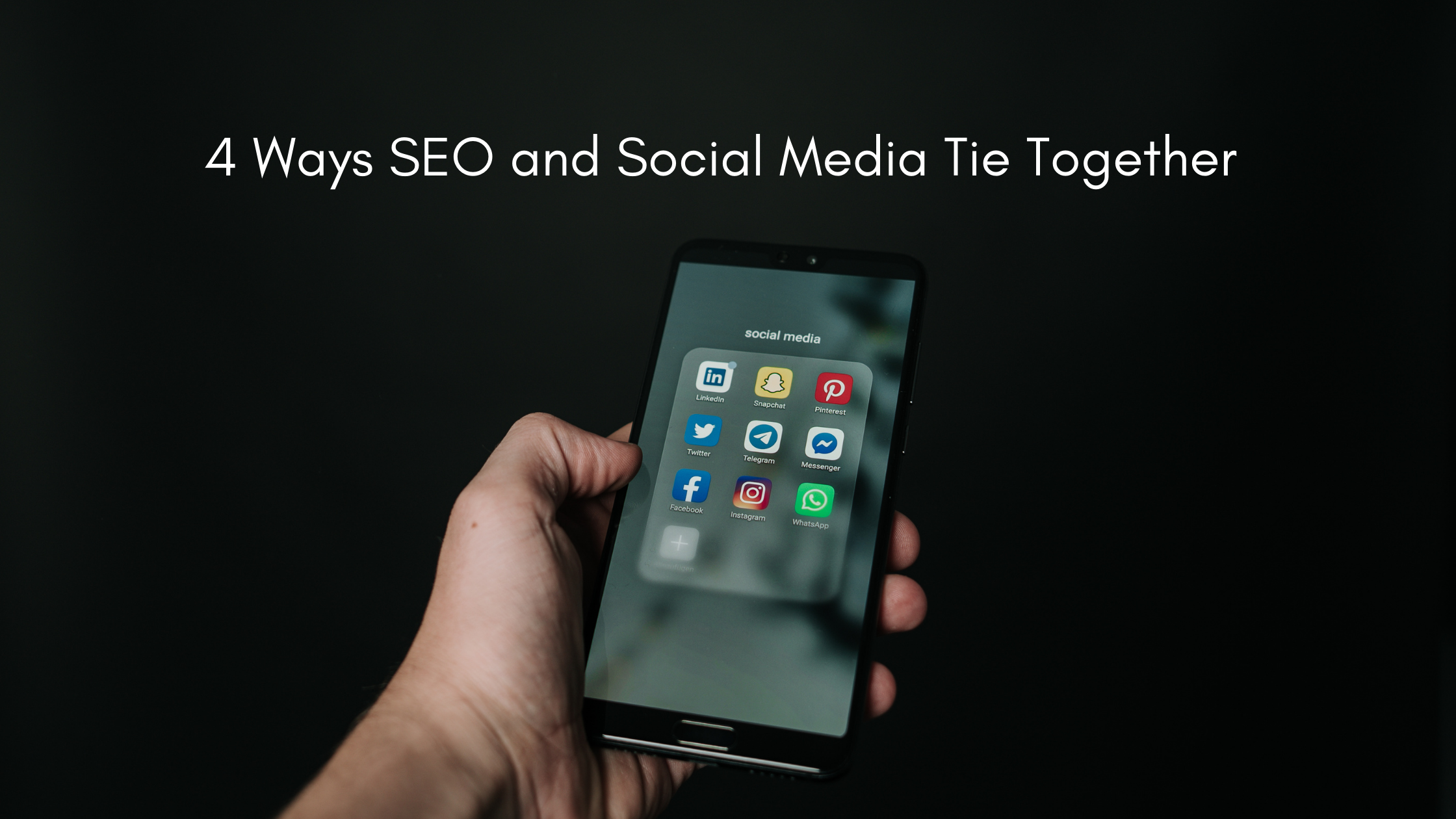Although social media won’t directly help your search engine optimization efforts within your website, social media and SEO still tie together. This post will break down 4 ways that social media and SEO work together to help drive traffic to your website.
We’ll touch on:
- Content Distribution
- Enhanced visibility
- Backlink acquisition
- Indexed social posts (separate from website indexing)
The Relationship
When you think of SEO, the first idea that comes to mind is organically driving more traffic to your website. Organically meaning, you’re not paying for digital advertisements and users are finding your brand by searching for a given topic online (within search engines).
Although social media isn’t going to directly help your website SEO efforts, it will indirectly help your overarching goal within SEO of gaining visibility online.
Now let’s dive into the 4 ways social media and SEO tie together.
- Content Distribution
The most important aspect of SEO is creating quality content. Once the quality content is created, it’s then indexed by search engines.
In addition to just the content creation, you’ll need to distribute it across multiple networks to increase the visibility (we’ll touch more on this shortly).
What is one of the most relevant (if not the most) methods in this decade to distribute content? Social media. Keep in mind that social media channels aren’t all the same, and that you should leverage the channel(s) that best align with your business goals.
Here’s some examples to clarify what that means:
- Instagram: very popular in the business-to-consumer model. Also great for selling products
- LinkedIn: much more popular in the business-to-business model. Great for pushing consultative services
- Twitter: enables consumer-to-consumer dialogue where ideas are shared and information is spread.
These examples aren’t true in all cases, but are meant to get you thinking about what you’d like to gain out of each social media channel and how it helps you get results.
Now that you’re done creating content and strategically choosing which social channels to distribute the content on; it’s time to distribute the content across the channels.
- Enhanced Visibility
By effectively choosing the channels to distribute your content, you’re enabling enhanced visibility, further evolving the relationship between social media and SEO.
If you’re solely focusing on just optimizing for SEO, then your goal is to drive more organic traffic.
That’s great, but if your goal is to drive more organic traffic then you’re doing your business a disservice by not leveraging social media to further enhance visibility.
Let’s put it into a formula (my finance friends would laugh at this one, but we’re in marketing now so away we go).
Effective SEO = Enhanced Visibility
Effective SEO + Social Media = Enhanced visibility on steroids
Once you distribute your content on social media, you further enhance visibility of your content by driving engagement. Your audience doesn’t want to just consume information, they want to consume information and have a dialogue with a community that helps solve their problem. Strive for engagement first, the followers will come later.
- Backlink Acquisition
Another critical element (arguably the most critical), is backlink acquisition. By obtaining backlinks from external sites, you’re receiving traffic from other websites that found your content and pages so valuable that they’re linking to them as a source of information (not selling, information).
There are two ways to obtain backlinks:
- A backlink acquisition outreach strategy: consisting of manually reaching out to targeted websites in hopes of gaining a link.
- Organic backlink acquisition: consisting of users finding your content organically, and deeming it worthy to link their content to.
The first option of manual outreach is important, but is difficult and will take a lot of time. To speed up the process, organic backlink acquisition will complement these efforts and allow you to gradually grow backlinks (and traffic) over the long-haul.
What does social media have to do with backlink acquisition? By sharing your content on social media, you’re enabling more users to see it. The more users that see your content and find it valuable, the greater chance you have of gaining an organic backlink.
As an example, let’s say you’re posting a blog post on twitter discussing how to obtain backlinks. A freelancer then sees that article and finds it valuable enough to share with her network. Within her network is a marketing team that reads the article and decides it would be a great resource to link to on their website, in order to complement a similar blog post that they wrote.
You’re not even solely targeting your network in this case, but the networks of the audience that follow you as well. This multiplies your reach exponentially when you drive engagement within your immediate audience.
- Indexed Social Posts
The last element of how social media and SEO tie together is indexed social posts. Earlier we touched on how your content posted to your website is indexed and then distributed, social media posts are no different.
For example, let’s say i’m searching for the Yankees on Google. We see two different aspects here:


The indexed website content is the first piece of content distribution that we discussed in this article, while the indexed social media post is also being indexed but just not for your website.
In turn, by having indexed social posts show up within search engines, you’re now enabling yet another channel that has the potential to funnel more traffic to your website.
Keep in mind, in this example we were searching for a name with high brand recognition and established significant authority for the search term. This makes it important to ensure that the language and hashtags you’re using accurately reflect the topic you’re informing your audience on.
Although social media and SEO don’t work in the same manner, they complement each other well and this example shows how they can work together to continue driving traffic to a page.
Tactics That Complement Your Efforts
The takeaway here is that neither social media or SEO replace one another. They’re rather meant to work together to achieve the goal of driving more traffic to your website, and ultimately converting that traffic into customers.
Leveraging any marketing tool, whether it be social media, SEO, or any of the array of other marketing channels are a time commitment.
To generate the greatest return on investment (time and capital investment), you’ll need to look for ways that the elements can complement one another and deploy them appropriately; SEO and social media are just one small example of two tools that can be powerful for your organization when deployed correctly.
Whether you’re looking for ideas on additional tactics that can be used, or need help deploying the social media and SEO combo, be sure to reach out with any questions.

Gary McConnell Co-founded Rubicom Digital in 2019 with a goal of providing digital marketing consulting services in the B2B space.
Gary continues to serve as the Marketing Director of a Data Center-focused IT Provider, VirtuIT Systems.

